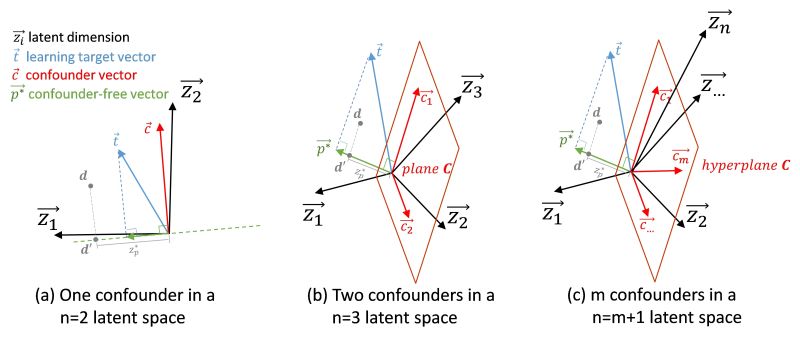A new paper by Xianjing with, Bo, Gennady, and Esther from the BIGR has now been published in Medical Image Analysis!

This study proposes a novel methodological pipeline for confounder correction to prevent misleading findings. In particular, they introduce geometric insights of confounders into the latent space of autoencoders and propose a correlation-based loss mitigating confounders via vector orthogonalization. The proposed method is validated using a synthetic dataset, and further applied to two real medical imaging applications of brain imaging and 3D facial shape.
In AI-based medical image analysis, it is known to be difficult to derive clinically or epidemiologically significant insights from AI-generated results, due to the complexity of visualizing non-linear modeling in AI models (known as the black box issue), and the lack of control over confounding variables (which can lead to misleading findings).
Xianjing proposes his novel method to address these challenges. His work results in reducing confounder influences, preventing wrong or misleading associations, and offering a unique visual interpretation for in-depth investigations by clinical and epidemiological researchers.